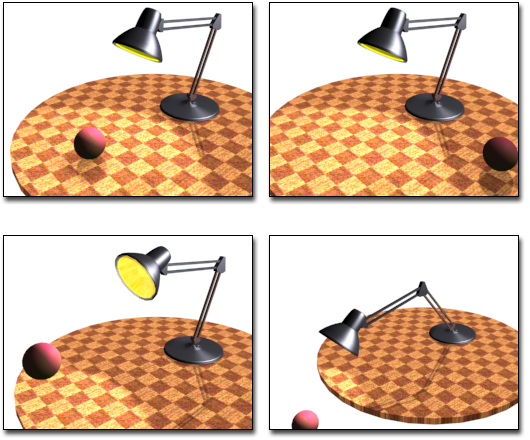Use the binding functions in the HD Solver to cause an object to attempt to maintain its position and orientation relative to the world or to another object. A bound object will resist motion in the kinematic chain until the chain is stretched near its limits and the bound object must move to complete the IK solution.

In the top row, the ball is independent of the lamp. In the bottom row, the lamp head is bound to the ball's position.
You can bind an object by position, orientation, or both. Once an object is bound you can set binding axes, weight, and whether the binding is absolute or relative.
Binding an Object to the World
You can bind an object to the world if you want the object to hold its position and orientation as long as possible during IK operations.
If you are animating a walking figure you want one foot to remain in place while you position the other foot. Without binding, the whole hierarchy would have a tendency to slide around when you attempt to position a foot. Binding both feet to the world ensures that the unselected foot stays in place while you position the other foot.
Binding an Object to a Follow Object
You can bind a selected object in your hierarchy to any other object that is not a descendant of the selected object. This other object is called the follow object.
The behavior of the bound object varies depending on the state of the Relative buttons next to the bind options.
You might want to animate a figure that always points to another object. Bind the hand of the figure to the other object with Relative active. Turn IK on, and as you move the object, the hand and arm of the figure move to point at it.
If you decide that you do not want an object to be bound you can either turn off the Bind Orientation and Bind Position boxes, or unbind the object from its follow object.